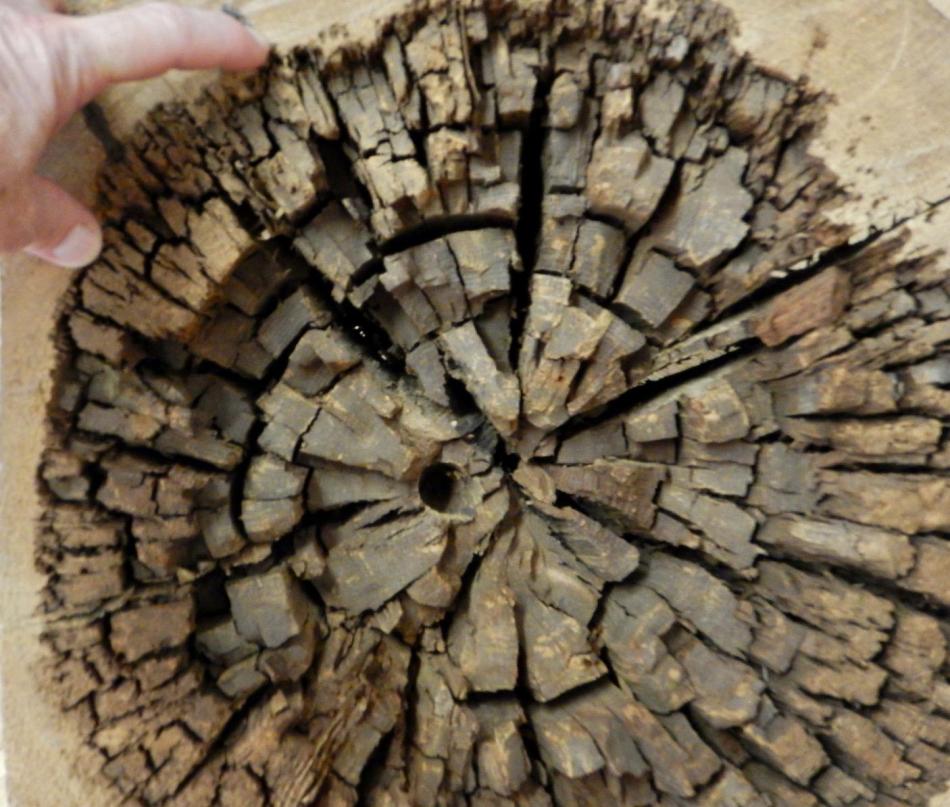Jul 25 2017
Two decades ago, Barry Goodell, a Microbiologist who is currently a Professor at the University of Massachusetts Amherst, and his team found out a peculiar system used by certain microorganisms to break down and recycle wood.
At present, three orders of “brown rot fungi” with the ability to digest biomass have been recognized. However, there was no knowledge on the particulars of the mechanism.
 Barry Goodell and colleagues at UMass Amherst have discovered a unique system that some microorganisms, notably brown rot fungi, use to digest and recycle wood. In a new paper, they report details of a non-enzymatic, chelator-mediated biocatalysis method of breaking down woody biomass that is very different than methods used by other microorganisms.
Barry Goodell and colleagues at UMass Amherst have discovered a unique system that some microorganisms, notably brown rot fungi, use to digest and recycle wood. In a new paper, they report details of a non-enzymatic, chelator-mediated biocatalysis method of breaking down woody biomass that is very different than methods used by other microorganisms.
At present, Goodell and his team have used various complementary research tools to elucidate innovative particulars of this unpredicted mechanism at work, which astonishingly does not include enzymes which are the regular accelerators of chemical reactions. According to Goodell, Basidiomycota brown rot fungi alternatively use a non-enzymatic, chelator-mediated biocatalysis process that is, “very different than that used by any other microorganism studied.” Chelators are organic compounds with the ability to unite metal ions. Here, they also produce “hydroxyl radicals” to digest wood and synthesize simple building-block chemicals.
The study has been outlined as “a paradigm shift in understanding fungal biocatalysis for biomass conversion” by colleagues at Oak Ridge National Laboratory. The outcomes of the study have been published in the latest issue of the journal Biotechnology for Biofuels.
Our research on fungal bioconversion systems looks at a novel mechanism that has potential use in bio-refineries to ‘deconstruct’ woody biomass for conversion into platform chemicals for biopolymers or energy products.
Barry Goodell, a Microbiologist and Professor at the University of Massachusetts Amherst
Brown rot fungi, which can be seen in the northern as well as the southern hemispheres of earth, are the most common decay fungi found in North America. Due to the fact that these evolved in recent times compared to other fungi, there are less brown rot species in contrast to older white rot species which are abundant. “However, because of their efficiency in degrading wood, brown rot fungi have come to dominate, particularly in degrading softwoods,” added Goodell. Moreover, they are at present abundant as they recycle nearly 80% of the softwood biomass carbon on earth, chiefly found in the dense forests in the northern hemisphere.
Goodell indicates that majority of the microorganisms use enzymes to digest compounds; however, enzymes are larger molecules that are physiologically “expensive” to synthesize as they comprise huge amounts of nitrogen. “Scientists used to think that these fungi would make holes in the cell wall that would let in the big enzymes,” noted Goodell, which is a kind of pretreatment model. “But as we explain here, that is not how it works.”
The fungi we study use a non-enzymatic, catalytic chelator-mediated Fenton system instead, a very simple process that makes use of hydrogen peroxide, also generated by the fungal system, and iron found in the environment.
Barry Goodell, a Microbiologist and Professor at the University of Massachusetts Amherst
He further stated that he and his team consider that the higher efficaciousness of brown rot fungi is because of the fact that they use chelator-mediated Fenton system in contrast white rot fungi, which mainly use enzymes for the purpose.
According to Goodell, “This group of brown rot fungi figured out how to generate hydroxyl radicals at a distance, that is, away from the fungus, to keep them away so the radicals won’t damage themselves while breaking down wood.” Hydroxyl radicals are harmful to cells and are known to be the most powerful oxidizing agents in biological systems.
In order to provide a detailed picture of the process, Goodell and his collaborators—which included Jody Jellison, who is at present the Director of the Center for Agriculture, Food and the Environment at UMass Amherst—employed a series of investigative techniques such as small angle neutron scattering (SANS), Fourier transform infrared (FTIR) analysis, sum frequency generation (SFG) spectroscopy, X-ray diffraction (XRD), transmission electron microscopy (TEM), and atomic force microscopy (AFM).
These fungi do produce a limited number of enzymes, but they come into play after the non-enzymatic action conversion by the fungi using chelators. The chelators are secondary metabolites, whose function is not easily followed using ‘omics’ techniques such as genomics. Using many advanced techniques though, we saw that some very small, low-molecular-weight compounds were working their way into the cell wall. This new paper describes how.
Barry Goodell, a Microbiologist and Professor at the University of Massachusetts Amherst
Goodell and Jellison refer to a process that starts with the fungi in the lumen, a hollow space inside the cells of plants. Subsequently, the fungi use their thread-like growth filaments called hyphae to wage a biochemical attack on the wood cell components.
According to Goodell, “This group of fungi evolved a way to break down the wood substrate by first diffusing chelators into the cell wall. The fungus makes the chelator and produces hydrogen peroxide from oxygen, and together they start to digest the cell wall into the sugar found in the basic building block of wood, glucose, which the fungus can use as food. This is how these fungi are eating the wood.”
Goodell and Jellison’s colleagues include Scientists at the Chinese Academy of Sciences, Beijing; Pennsylvania State University; Swansea University, U.K.; University of Agricultural Science, Uppsala, Sweden; Tokyo University of Agriculture and Technology; USDA Forest Service Southern Research Station, Pineville, LA; and Oak Ridge National Laboratory, TN. The above-mentioned organizations as well as the U.S. Department of Energy and USDA National Institute of Food and Agriculture funded the study.